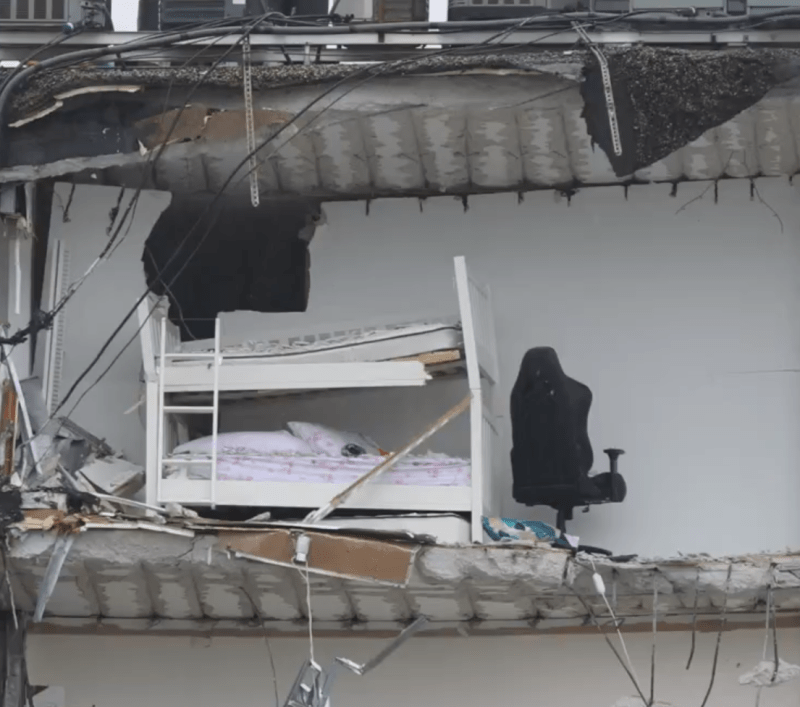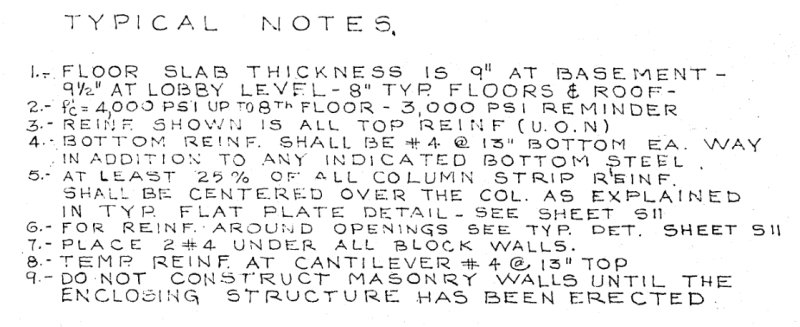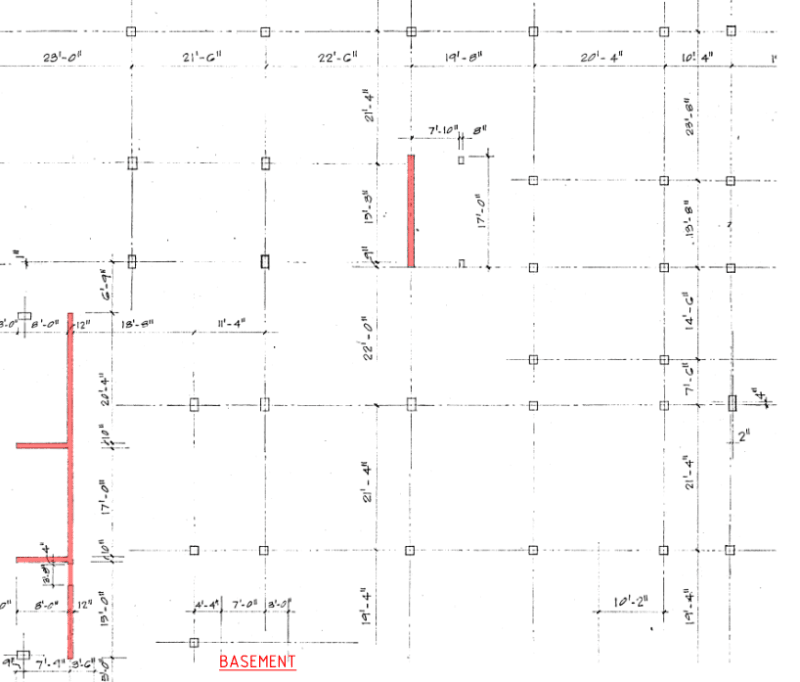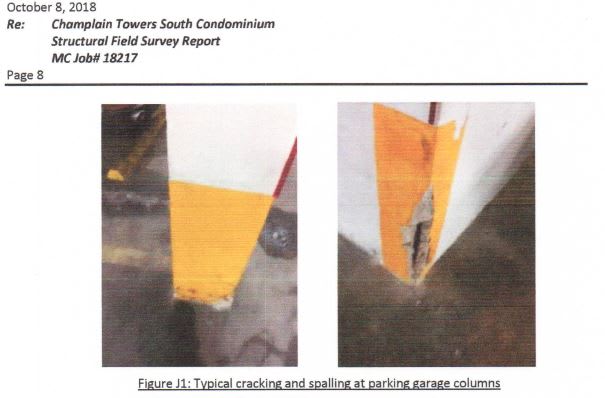The sudden collapse of relatively new RC concrete frame building is unusual. As the failure appears to be related to the crushing of
one or more concrete columns at the garage level the plausible reason is salt weathering of concrete. Concrete spalling due to the corrosion of rebars
should be also considered, but this will be rather unlikely, as the core of column shall be unaffected, and the local loss of section would create a "Freyssinet
hinge" contained by the vertical rebars and stirrups, or the remaining parts of these. The following is an interesting and likely related quote from a research paper
"Damage of Concrete and Reinforcement of Reinforced-Concrete Foundations Caused by Environmental Effects" published by Procedia Engineering as open access article:
"Salt weathering"
This occurs in concrete due to the capillary rise of water rich in slats through the soil and foundation structure. It
is prevalent in the areas with the considerable concentration of chlorides in the soil, ground water and atmosphere,
which is mostly the case in the coastal areas of the warm seas or in the structures where defrosting salt is often used
414 Zoran Bonić et al. / Procedia Engineering 117 ( 2015 ) 411 – 418
(road structures). Nevertheless, the mechanism of the crystallization process is similar to frost action. Namely, the
pressure caused by crystallization brings about the onset of cracks in the pore walls and afterwards the cracks, due to
crystallization in them grow bigger. This process, in presence of new amounts of water rich in salts, continues,
causing massive concrete degradation. The basis of this process is the reaction of calcium chloride (CaCl2) and
sodium chloride (NaCl) which causes changes in the Portland cement and causes generation of calcium hydroxide
(Ca(OH)2) [5].
This kind of concrete degradation, known also as chloride aggression, is particularly prominent in those cases
when the structures are positioned near the warm seas, in the conditions of high concentration of chlorides in the sea
water, soil and air. Warmer climate, in comparison to the areas with the continental and temperate continental
climate enhance salt weathering. In addition, high temperatures have an additional detrimental effect because
concretes, for the reasons of better workability are made with a high water/cement ratio which causes, in the
concrete hydration process, an increase in the concrete paste porosity, which facilitates capillary rise of chloride
saturated water after concrete hardening. The higher temperatures are the cause of the faster initial hydration of
cement which leads to the increased porosity of concrete and facilitates capillary rise and crystallization of chlorine
ions"
Full article is attached as pdf file.






